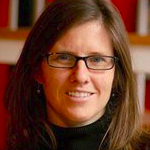The U.S. Department of Education just wrapped up a two-day conference, touted as a first-of-its-kind summit among teachers and their bosses—school board members and administrators—in an effort to get these historically opposing groups to work together to improve the nation's schools.
About 150 school districts from 40 states sent teachers and administrators to the summit so that school labor and management could talk about student achievement and learn from the successes and challenges of others, rather than to rehash the nuts and bolts of labor contracts.
The conference organizers identified 10 areas that they believe exemplify the innovation and creativity that are the hallmarks of strong, collaborative, problem-solving relationships:
- Strategic direction-setting
- Clear and shared responsibility for academic outcomes of all students
- Supporting the growth and improvement of teachers and leaders
- School design, schedules, teacher workload, and time
- Teacher evaluation
- Administrator evaluation
- School Board evaluation
- Transfer, assignment, and reduction in force
- Compensation and benefits
- Dynamic decision-making and problem-solving
Arne Duncan, U.S. Secretary of Education, acknowledged that many of the nation’s 15,000 school districts are trapped in an adversarial dynamic, saying, “Unions and administrators have been battling each other for decades, and we have far too little to show for it. It hasn't been good for the adults, and it certainly hasn't been good for children."
He vowed to push attendees hard on the importance of collaboration, urging that, “first and foremost, student success must be the heart of the labor-management relationship.” He reminded attendees that “school boards, administrators and teacher leaders face different challenges...yet all stand or fall together on the quality of student learning.”
Duncan concluded his speech by telling attendees that, “Collectively, you have the power to stop our educational decline and help lead the country where we need to go...This is going to be a movement."







Comments are closed.